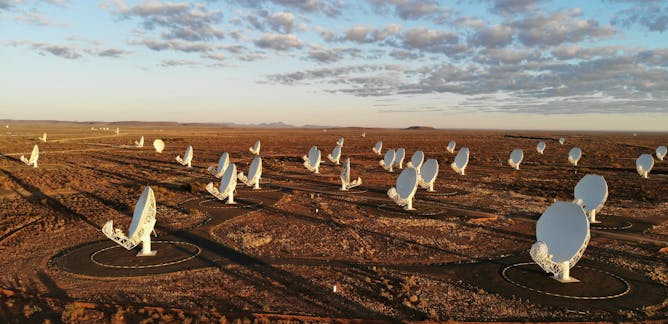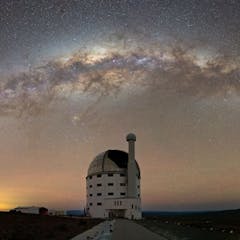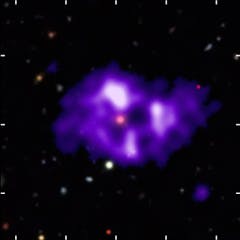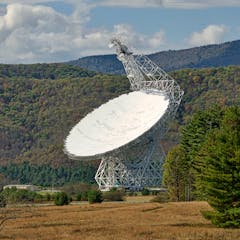
Articles on Square Kilometre Array
Displaying 1 - 20 of 51 articles

MeerKAT has made remarkable contributions to South African and international science.

An attempt to study gas in one galaxy with the MeerKAT radio telescope detected 49 other galaxies instead.

The astronomical community has thrived and world-class astronomical facilities have been established in South Africa.

Starlink satellites emit bright, unintended and unexpected signals that can be detected by radio telescopes.

Canada’s partnership in the world’s largest radio telescope, located in South Africa and Australia, creates new opportunities for research, but the benefits go beyond astronomy.

To the ǀXam and San people, being in the world as a person includes “the sky’s things” - an understanding of and deep connection with the cosmos.

Machine learning is becoming an indispensable tool in astronomy by sorting through enormous datasets from telescopes.

Can artificial intelligence transform the search for alien intelligence?

Hundreds of thousands of antennas across the Western Australian outback will transform our view of the Universe.

Fanaroff is one of the key individuals responsible for the current growth and strength of astronomy in South Africa.

Complementary science will be at the heart of the Square Kilometre Array.

Next-generation radio telescopes unravel the mysteries of ghostly circles in the sky.

A new 3D film follows two children as they discover the astrophysical story of the universe and Yamaji stories of the sky and land. Making it was an extraordinary cross-cultural experience.

Technology is allowing astronomers to study and analyse galaxies in far more detail than was previously possible.

The pandemic has underscored that the world requires agility for survival. That makes blue skies science, which encourages curiosity and nimble thinking, perhaps more important than ever.

The federal budget contains money for big-ticket items like the SKA telescope and mRNA vaccines. But dwindling funds for universities and fundamental science will leave us vulnerable to future problems.

Cape astronomers were responsible for, among other things, the first measurement of the distance to a star; the first photographic sky survey and the accurate measurement of the distance to the sun.

When the outlook is dark, astronomy can help us take the long view and build for the future.

Data science is going to grow over the coming decades and requires trained graduates who can handle the work.

The SKA global project could be a driver that contributes to South Africa’ economic growth.





